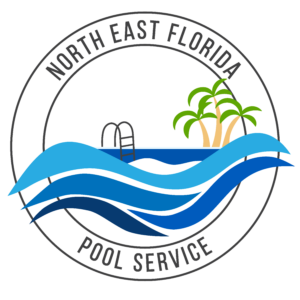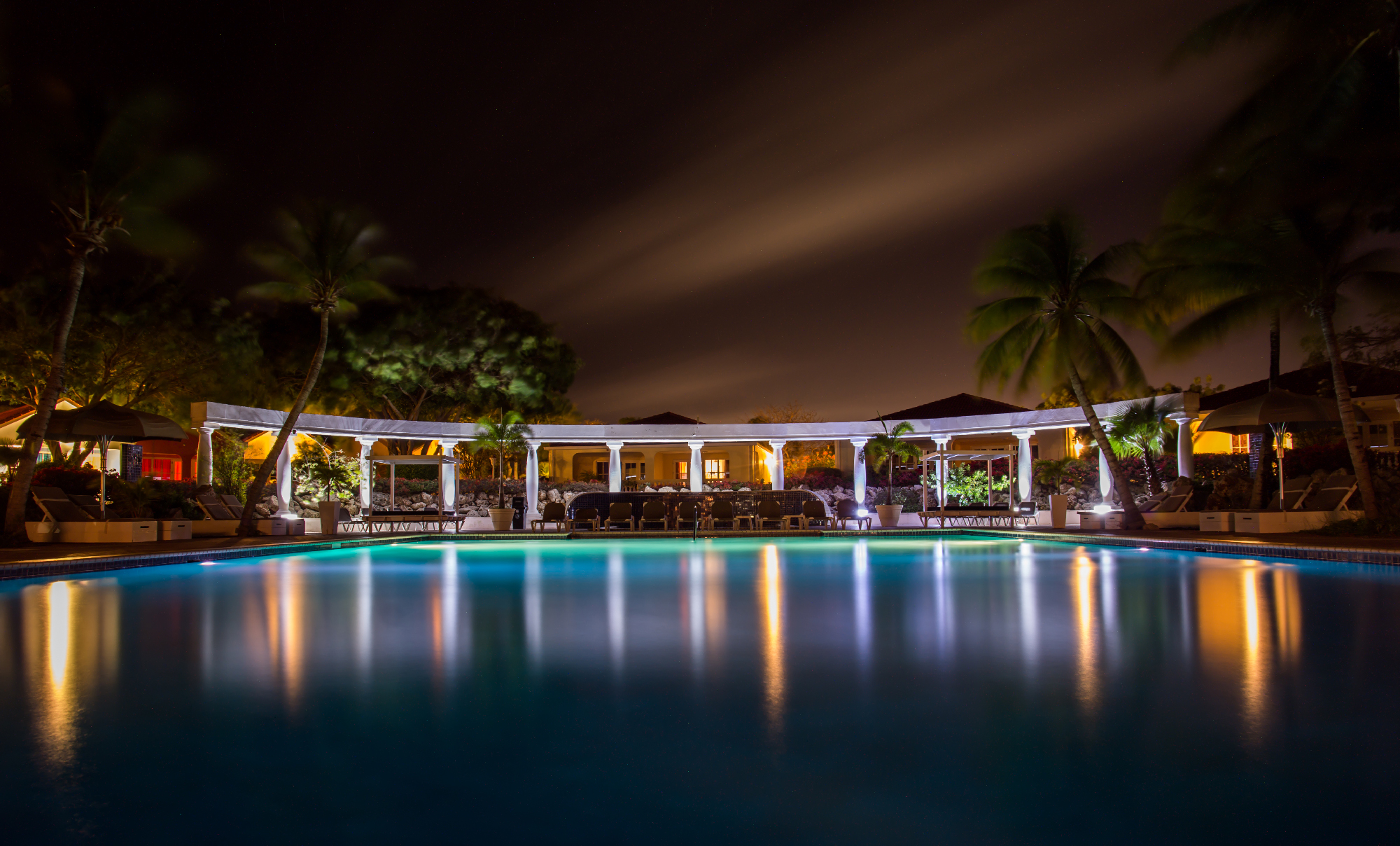Service:
We are staffed and ready to work with three levels of service. They include our Water Management Service, Partial Cleaning and Deluxe Full Service programs. A service record will be kept inside your time clock which documents the date and time of our service technicians’ most recent visit. Swimming should be delayed for a period of two hours minimum after chemicals have been added to your pool. This is a standard recommendation for most forms of pool chemicals.
Pool Covers:
Your pool cover should be pulled off on service day. Our service techs are instructed to leave the pool uncovered upon completion of service. The cover should remain pulled back for at least two hours after service. We recommend that your pool be uncovered at least 50% of the time. A pool that is covered all of the time lacks adequate oxygen which can cause chemicals to react abnormally and result in the pool’s water chemistry being out of balance and/or eye irritation. Frequent removal also helps to prolong the life of your cover.
These readings, when achieved in conjunction with the use of our chemicals, are both safe and ideal for your pool and equipment. You may feel confident knowing that our 26 plus years of experience have proven these readings to be the best and safest for you and your pool.
Access:
Please provide easy, unobstructed access for our service tech. If you keep your gate locked, please provide the service tech with a key. Unfriendly dogs should be secured when the pool is being serviced. If a key is not provided and the gate is inadvertently locked on service day, or an unfriendly dog is loose in your backyard, it will be necessary for us to charge for a return service trip. Because our low service charge is based on promptness and efficiency, we do not ring doorbells to gain access. Also, it is very important for safety reasons that no one but the service tech be in the yard while the pool is being serviced.
Dogs:
We take every precaution to keep your dog in your backyard. However, if your dog attempts to get out when you open your gate, he probably will do the same with us. We therefore cannot assume responsibility for your dog getting out. Our service tech will not enter your yard if you have an unfriendly dog that is not contained, and it will be necessary for us to skip service or charge for a rescheduled run.
Spas and Hot Tubs:
If the plumbing of your pool is connected to your spa, the chemicals will automatically circulate into the spa. Cleaning it is included in our Deluxe Full Service program. You may take a few buckets of chlorinated water from your pool and pour them into the spa as a supplement to your normal spa maintenance procedures in those cases where the spa is not plumbed to the pool.
Algae:
If your pool has algae, it will be cleared up at no extra charge as part of our Partial and Full Service plans. Because some types of algae are more resistant than others, please allow a reasonable period to completely eradicate it. Black algae must be brushed often with a stainless steel wire brush. It will turn gray as it starts to die and will eventually disappear. Keeping the pool clean and properly filtered will aid in the treatment of algae. PLEASE DO NOT ADD ANY CHEMICALS OR ALGAECIDE TO YOUR POOL as this can cause inaccurate test results and lead to other problems. We do not store any chemicals at the pool site. Our service tech will complete all necessary testing and add any required chemicals during each weekly service visit. Your pool equipment must be maintained regularly to ensure proper working order. A poorly running system will result in algae blooms.
Filter and Filtration:
Adequate filtration is as important as good water chemistry. With the dramatic increase in energy costs, some people try to economize by reducing the filtration time of their pool. This often counteracts our efforts to keep your pool clean. We will provide the proper water treatment but you must see to it that your pool is properly filtered. It should be noted that our Basic service does not include cleaning or otherwise maintaining the pool filter. Our office does provide these services for a modest charge, upon request. It is important that each and every drop of your pool’s water is pumped through the filter three times each day to assure that it has been properly and adequately filtered. To accomplish complete filtration of the water we recommend the following:
- Sand Filter 10 – 12 Hours
- Cartridge 9 – 10 Hours
- D.E. 8 – 10 Hours
Increase the time by 50% if you have a solar heating system. Allow longer filtration periods if the pool activity is heavy. Our personnel will advise you, by means of a door hanger on your front door, if your pool requires more filtration. It is in your pool’s best interest to follow the recommended filtration time. Filters should be cleaned when the pressure indicated by the pressure gauge on the top of the filter rises 7-10 lbs above the clean pressure or once a month, whichever comes first.
Cloudiness:
The most common cause of cloudy water is inadequate filtration. Increase the filtration time and the problem should resolve itself (see Filter and Filtration). If it does not, you may have a malfunction in your filtration system. We offer filter repair services. Please contact our service department for an appointment and prices.
Eye Irritation:
You may have heard that chlorine causes eye irritation. This is simply not true. The fact of the matter is the eye irritation is caused by:
- In adequate filtration (most frequent cause)
- Ammonia introduced into the pool water by means of urine. (One small child urinating in your pool can cause very heavy eye irritation for up to 24hrs.)
- Organic material introduced into your pool by adding fresh water before swimming. (Always add water AFTER you swim – Never BEFORE)
- Leaving a pool blanket on your pool during the day. Water needs to be exposed to air. Please remove the blanket during daytime hours.
- Perspiration in pool – always shower before swimming.
- Lotions such as sunblock or hair care products.
Conditioning:
On our first visit, the service tech will perform numerous tests on your water, including a test of Isocyanuric Acid, commonly called Conditioner or stabilizer. Conditioner screens out ultraviolet rays and prevents the sun from taking chlorine from your pool water. Without it, sunlight will take the chlorine almost as fast as we can put it in. Once added, it stays permanently as part of your pool water and does not evaporate or dissipate. It only disappears when water is lost through emptying your pool, plumbing or pool leakage, excessive splash out, heavy rain, water overflow, etc. We will add only the ideal range of 60-100ppm. Additional requirements to obtain or maintain the recommended levels, will be billed each summer to you. An average size, leak-free pool operating in good condition would take approximately 15+ pounds a year.
Chlorine and Stains:
There are many sources that contribute to the accumulation of metals or minerals in swimming pool water. These often cause “staining” of the pool surface. It is not possible to guarantee that staining will not occur in a pool or that the simple addition of chlorine will not cause the settling of metals from the water once it becomes saturated with metals. Scale, stains, discoloration and cloudiness in a pool are caused by the settling out of (precipitation) metals in the water. If the precipitation metals form a hard deposit on the pool walls, it is referred to as scale. If the precipitated metals have a color and are deposited on the pool walls, they are called stains. Super chlorination is essential for proper swimming pool maintenance. When a super chlorination is done with any form of chlorine, i.e. gas chlorine, sodium hypochlorite, calcium hypochlorite, sodium dischloroisocyanurate, or trichloroisocyanuric acid, there may be an immediate settling out or precipitation of metals from the water and subsequent staining of the pool. Chlorine or acid in and of themselves cannot cause stains. Chlorine bleaches and acid are used to remove stains from pool finishes. Therefore, even though staining may seem to be caused by the chemicals themselves, this is not possible. In other words, iron stains can only be caused if iron exists in the water. Copper stains, only when copper is in the water, and so on. Lack of filtration may cause stains to appear sooner. The pool water needs to be circulated the recommended time for the type of filter. Otherwise, the precipitation of the metals on the plaster is accelerated. If you do find staining to be a problem with your pool, contact our service department for information regarding our special stain treatment.
Colored Plaster Pools:
The swimming pool industry is fully aware that all colored plaster pools become mottled and blotched sooner or later. Quite often a light colored ring will appear around the main drain or the plaster will appear uneven in color. This condition is typical of all colored plasters and is simply the nature of colored plaster pools. There is nothing that can be done from a service point of view to prevent or cure the blotching, streaking, or mottling that will occur. Blotching may be gradual or appear seemingly overnight even after the pool is several years old. All pool builders or plaster companies require their customers to acknowledge that blotching is a normal occurrence in colored plaster pools.
Repair:
We have fully trained and qualified repair techs for all your pool needs.
Cleaning Requirements:
All swimming pools require weekly cleaning maintenance twelve months a year. Summers require more vigorous cleaning than winter. Auto vacuums significantly reduce manual cleaning chores. Screen enclosures reduce this work even more. Chemicals are enablers which assure healthy and aesthetically correct outcomes when treatment protocols, proper filtration cycles, cleaning maintenance, and equipment maintenance are performed in harmony with each other on a timely and consistent basis.
Gated community access:
It is the responsibility of our gated community customers to ensure our company is registered for access with your gate guards.
Are contracts required:
Contracts are not required but on request of the customer we can provide one.
Do I have chlorine form options:
Yes, you may choose from salt chlorination, liquid chlorine, or trichloro-s-triazinetrione. We recommend chlorine be handled by trained professionals. All forms are effective.
What are the common types of chlorine?
The most common include liquid chlorine, dichlor, trichlor, lithium, and cal-hypo. The formal names include:
- Gas (Chlorine)
- Bleach or Liquid (Sodium Hypochlorite)
- Trichlor Tablets (Trichloro-S-Triazinetrione)
- Granular (Calcium Hypochlorite) or Cal-Hypo
With the exception of gas, all are chlorine compounds containing additives that will cloud the water over time and may adversely impact pool surface, equipment and swimmers.
Are there alternatives to Chlorine?
Due to the extreme cost of Biguanides and Bromine, and the unreliability of UV systems (which only minimize chlorine use), we sanitize with chlorine only.
Finally, regardless of what you may hear, salt systems create chlorine!

